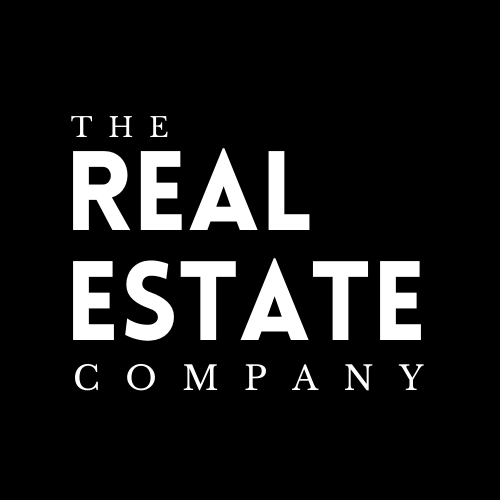 Investing in real estate can be a lucrative endeavor, and one asset class that has garnered increasing attention from savvy investors is multifamily properties. Unlike single-family homes, multifamily properties offer the potential for multiple income streams, reduced vacancy risks, and greater scalability – making them an attractive option for those looking to build wealth through real estate. However, navigating the world of multifamily investing can be daunting, especially for newcomers. From understanding the nuances of financing to managing the complexities of property operations, there are numerous factors to consider. In this comprehensive guide, we’ll explore the key tips and strategies that can help you succeed in the exciting realm of multifamily real estate investing.
Investing in real estate can be a lucrative endeavor, and one asset class that has garnered increasing attention from savvy investors is multifamily properties. Unlike single-family homes, multifamily properties offer the potential for multiple income streams, reduced vacancy risks, and greater scalability – making them an attractive option for those looking to build wealth through real estate. However, navigating the world of multifamily investing can be daunting, especially for newcomers. From understanding the nuances of financing to managing the complexities of property operations, there are numerous factors to consider. In this comprehensive guide, we’ll explore the key tips and strategies that can help you succeed in the exciting realm of multifamily real estate investing.
Understanding the Basics of Multifamily Properties
At the heart of multifamily investing lies the distinction between single-family and multi-unit residential properties. Multifamily properties are defined as any residential building that contains two or more housing units under a single roof or within a single complex. This can include duplexes, triplexes, fourplexes, apartment buildings, and even condominium complexes.
The primary advantage of multifamily properties is the potential for multiple income streams. Unlike a single-family home, where the owner relies on a single tenant, a multifamily property can generate rental income from multiple units, effectively diversifying the investment and reducing the impact of vacancies. This can lead to greater cash flow, higher returns, and the opportunity to scale the investment portfolio more efficiently.
Evaluating the Location: The Cornerstone of Multifamily Investing
When it comes to real estate investing, the adage “location, location, location” holds true, especially for multifamily properties. The location of a multifamily asset can have a profound impact on its long-term success, influencing factors such as tenant demand, rental rates, and the potential for appreciation.
As you evaluate potential multifamily investments, consider the following factors:
Neighborhood Desirability
Look for areas with strong demand for rental housing, such as those with good schools, access to public transportation, and proximity to employment hubs and amenities. These factors can attract and retain quality tenants, ensuring a steady stream of rental income.
Crime Rates and Safety
Assess the local crime statistics and overall sense of safety in the neighborhood. Tenants are more likely to be drawn to areas with low crime rates, contributing to higher occupancy and lower turnover.
Future Development Plans
Research any upcoming infrastructure projects, rezoning efforts, or new developments planned for the area. These can signal future growth and increased demand for rental housing, potentially driving up property values.
Environmental Factors
Consider the potential impact of natural disasters, such as flooding or earthquakes, on the property and the surrounding area. Ensure that the multifamily asset is located in a region with a low risk of environmental hazards.
By thoroughly evaluating the location, you can make more informed decisions and increase the likelihood of acquiring a multifamily property that will deliver consistent returns and long-term appreciation.
Assessing the Property’s Financials
Once you’ve identified a potential multifamily property in a desirable location, the next step is to assess the property’s financials. This involves analyzing the current and projected income and expenses associated with the investment.
Rental Income
Start by evaluating the current rental income generated by the property. Review the existing leases and rent rolls to determine the average rental rates and occupancy rates. Look for any potential upside in rental income, such as units that are currently undermarketed or have the potential for rent increases.
Operating Expenses
Consider the operating expenses associated with the property, including property taxes, insurance, utilities, maintenance costs, and property management fees. It’s important to accurately estimate these expenses to calculate the property’s net operating income (NOI).
Capital Expenditures
Take into account any necessary capital expenditures, such as repairs, renovations, or upgrades. These expenses can significantly impact the property’s cash flow and overall return on investment. It’s important to budget for these costs and factor them into your financial analysis.
Financing Options
Evaluate the financing options available for the multifamily property. This includes assessing the loan terms, interest rates, and down payment requirements. It’s important to consider the impact of financing on the property’s cash flow and overall profitability.
Cash Flow Analysis
Perform a cash flow analysis to determine the property’s potential cash flow. This involves subtracting the property’s operating expenses, capital expenditures, and financing costs from its rental income. A positive cash flow indicates that the property is generating more income than it’s costing to operate, while a negative cash flow indicates potential financial challenges.
Return on Investment (ROI)
Calculate the property’s potential return on investment. This can be done by dividing the property’s net operating income by its purchase price or total investment. A higher ROI indicates a more profitable investment.
By thoroughly analyzing the property’s financials, you can determine its potential profitability and make informed decisions about whether or not to proceed with the investment.
Financing the Multifamily Investment
Once you’ve assessed the property’s financials and determined its potential profitability, the next step is to secure financing for the investment. There are several financing options available for multifamily properties, including:
Traditional Bank Loans
Traditional bank loans are a common option for financing multifamily investments. These loans typically require a down payment of 20% to 30% and have fixed interest rates and terms ranging from 15 to 30 years. To qualify for a bank loan, you’ll need to have a strong credit score and a solid financial history.
Government-Sponsored Loans
Government-sponsored loans, such as those offered by the Federal Housing Administration (FHA) or the Department of Veterans Affairs (VA), can be a viable option for financing multifamily properties. These loans often require a lower down payment and offer more flexible qualification requirements.
Private Lenders
Private lenders, such as private equity firms or individual investors, can provide financing for multifamily investments. These lenders often offer more flexible terms and faster approval processes than traditional banks. However, private loans may come with higher interest rates and shorter repayment periods.
Seller Financing
In some cases, the property owner may be willing to offer seller financing, where they act as the lender and finance the purchase of the property. This can be a beneficial option for buyers who may not qualify for traditional financing or who want more flexible terms.
When choosing a financing option, consider factors such as interest rates, repayment terms, down payment requirements, and the impact on the property’s cash flow. It’s important to work with a trusted lender who understands multifamily investing and can provide guidance throughout the financing process.
Managing and Operating the Multifamily Property
Once you’ve acquired a multifamily property, effective management and operations are crucial to its success. Consider the following strategies for managing and operating your investment:
Professional Property Management
Hiring a professional property management company can help streamline operations and ensure that the property is well-maintained. Property managers handle tasks such as tenant screening, rent collection, maintenance coordination, and lease enforcement. Their expertise can save you time and effort while maximizing the property’s profitability.
Tenant Screening and Retention
Implement a thorough tenant screening process to ensure that you attract reliable and responsible tenants. This includes conducting background and credit checks, verifying income and employment, and checking references. Once you have quality tenants in place, focus on tenant retention by providing excellent customer service, responding promptly to maintenance requests, and addressing any concerns or issues.
Regular Maintenance and Repairs
Maintaining the property in good condition is essential for attracting and retaining tenants. Implement a regular maintenance schedule and address repairs quickly to prevent further damage and maintain tenant satisfaction. Consider setting aside a portion of the rental income for a reserve fund to cover unexpected repairs or capital expenditures.
Market Analysis and Rent Adjustments
Regularly evaluate the local rental market to ensure that your rental rates remain competitive. Consider making rent adjustments periodically to keep up with market trends and maximize rental income. However, be mindful of local rent control regulations and ensure that any rent increases are justified and in compliance with local laws.
Long-Term Planning and Investment Strategy
Develop a long-term plan and investment strategy for your multifamily property. Consider factors such as property appreciation, potential for future renovations or expansions, and the overall market conditions. Regularly review your investment strategy and make adjustments as needed to maximize the property’s value and returns.
Multifamily real estate investing offers the potential for significant financial rewards. By understanding the basics of multifamily properties, evaluating the location, assessing the property’s financials, securing financing, and implementing effective management and operations, you can unlock the potential of multifamily investing and build long-term wealth through real estate. Remember to conduct thorough due diligence, seek professional advice when needed, and continuously educate yourself about the market and industry trends. With careful planning and strategic decision-making, multifamily investing can be a profitable and rewarding venture.
Contact us (859) 979-1508) for a free consultation!
Buy | Sell | Rent | Build
—
 About The Real Estate Company
About The Real Estate Company
Residential and Multi-family Realty Services for Lexington, Richmond, and Surrounding Areas. We close over 40 million in sales each year. Our love for Central Kentucky and our clients is the key to our success. We provide careful guidance, persistence, and savvy marketing to deliver results for our clients time after time.
> Learn More
